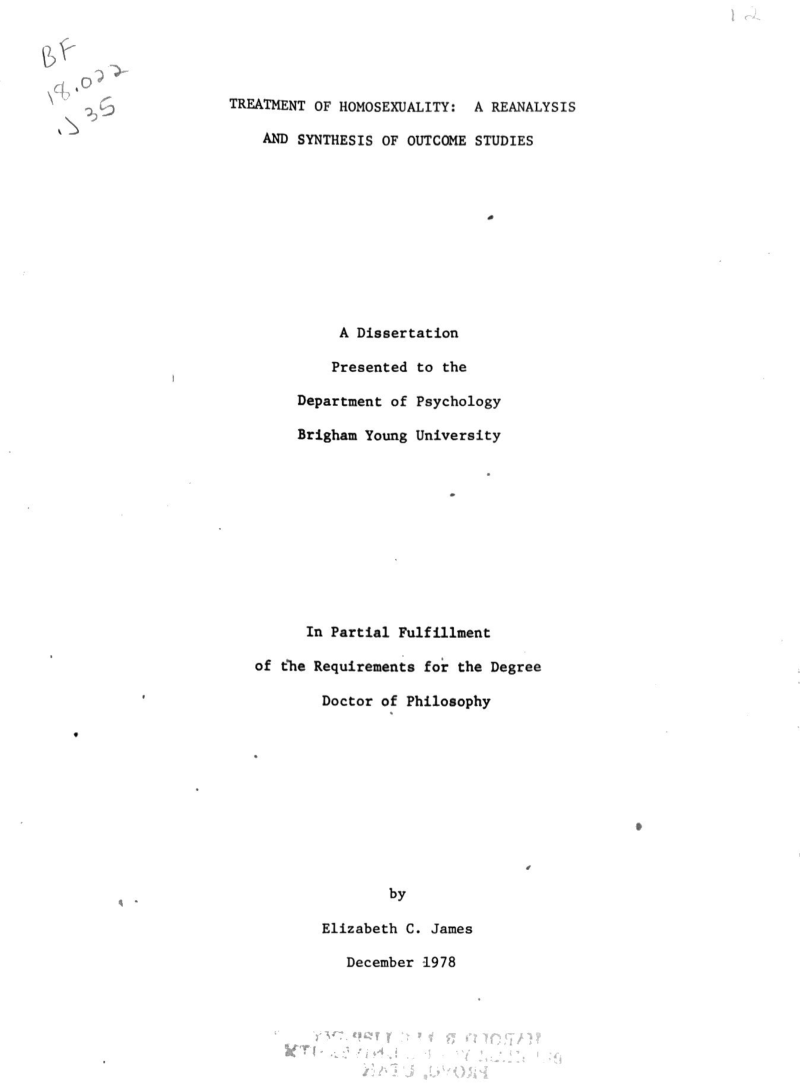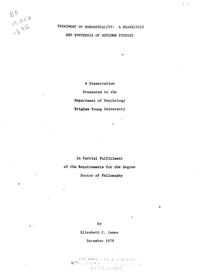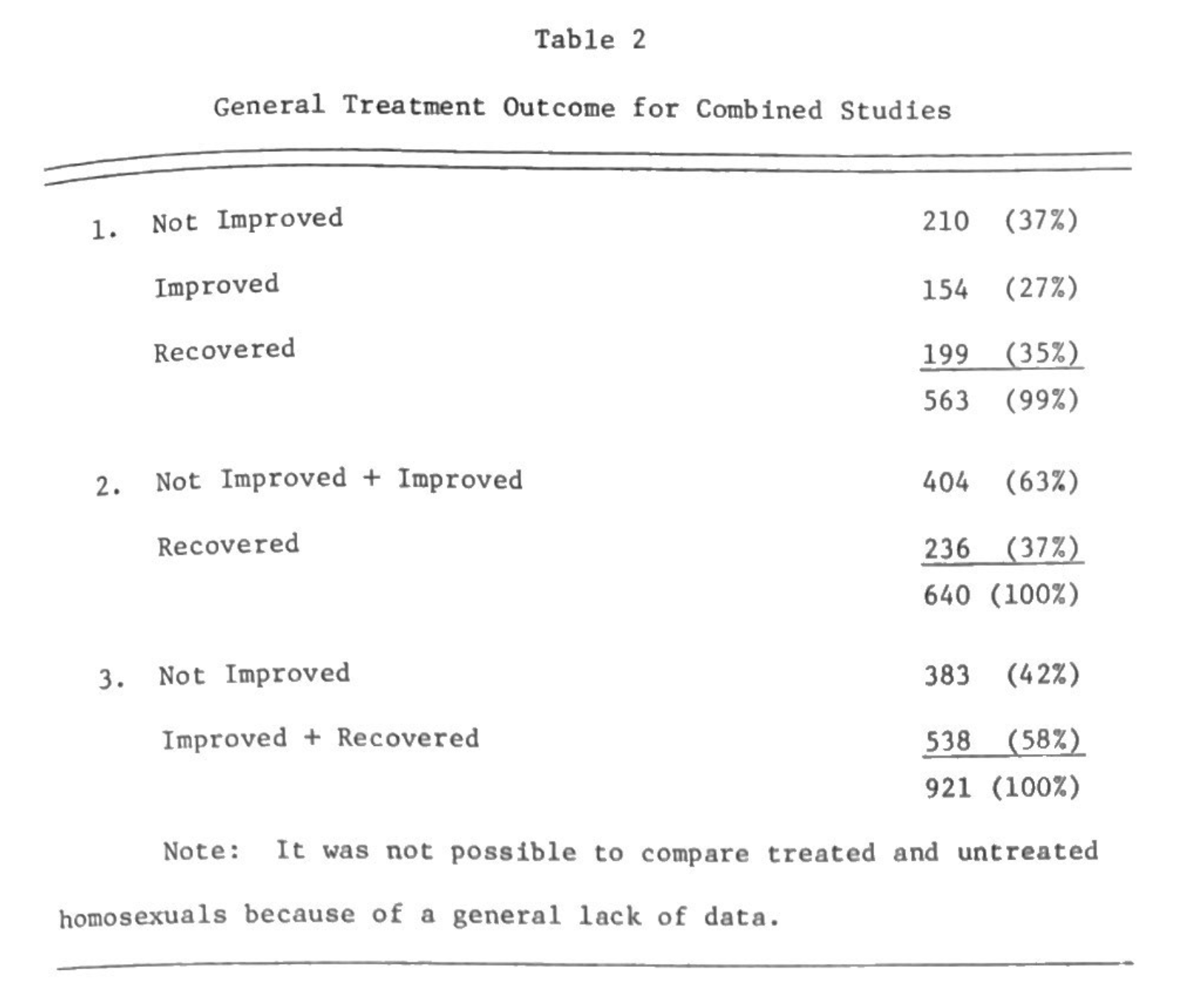BYU Psych Department dissertation by Elizabeth C. James surveying reorientation efforts in treatment of homosexuals.
- Type
- Academic / Technical Report
- Hearsay
- DirectSecondary
- Reference
Elizabeth James, "Treatment of Homosexuality: A Reanalysis and Synthesis of Outcome Studies," BYU Psychology Department, December, 1978
- Audience
- N/A
- Transcription
Introduction
The extensive literature on the treatment of homosexuality reveals a vast array of differing opinions regarding outcome. At one end of the spectrum, a report of the Wolfenden Committee (1963) in Great Britain is strikingly pessimistic: "We were struck by the fact that none of our medical witnesses were able . . . to provide any reference in medical literature to a complete change" (p. 110). These researchers logically conclude that "a total reorientation from a complete homosexuality to a complete heterosexuality is very unlikely indeed" (p. 110). Similarly, a letter from Freud (1935/1951) to a concerned mother, provides little further encouragement:
By asking me if I can help, you mean, I suppose, if I can abolish homosexuality and make normal heterosexuality take its place. The answer is, in a general way, we cannot promise to achieve it. In a certain number of cases we succeed in developing the blighted germs of heterosexual tendencies which are present in every homosexual, in the majority of cases it is no more possible. (p. 787)
At the other end of the spectrum some therapy results are remarkably promising in contrast. van den Aardweg (1972), for example, maintains a 50% recovery rate for completed cases where cure is defined according to relatively stringent criteria: "The extinction of homosexual impulses (feelings and fantasies) and the restoration of normal ones, for an extended period of time. . . .something more than a so-called 'heterosexual adaptation', which takes place without a major change in feelings" (p. 63). Not only are individual authors reporting encouraging results, but entire schools of thought are sometimes equally optimistic. For example, a learning paradigm for the development and maintenance of homosexuality, implies a favorable prognosis for recovery. Kinsey demonstrated that sexual excitement to the presence of yellow rubber gloves occurs in cats who have been routinely masturbated with such gloves. "Homosexuality is no more inborn in a man than a sexual attachment to rubber gloves is in cats. It is in both cases a learned behavior, reinforced by the experiences of sexual satisfaction" (Alexander, 1967, p. 122). It follows, then, that the learning of appropriate, heterosexual contingencies is a key towards sexual reorientation.
Numerous complexities and inconsistencies in the existing literature on the treatment of homosexuality make the task of analysis and synthesis difficult. Yet such an endeavor is imperative if meaningful comparisons between studies are to be achieved and the state of the field evaluated. However, Feldman and MacCulloch (1971) make the all-to-valid observation:
Only indirect comparisons can be made, and inevitably these must be between widely differing samples of patients, treated by different therapists, and using often unstated variations of the various possible techniques. Anyone attempting to review the literature on treatment is thus circumscribed by the unsatisfactory nature of almost the entire published literature. (p. 1)
As will be seen, the present review clearly documents this observation.
- Citations in Mormonr Qnas
The B. H. Roberts Foundation is not owned by, operated by, or affiliated with the Church of Jesus Christ of Latter-day Saints.



